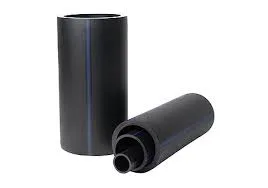Aug . 05, 2024 03:07 Back to list
Choosing the Right Round PE Welding Rod for Your Next Project and Its Benefits
Understanding Round PE Welding Rods Applications and Advantages
Polyethylene (PE) is a widely used plastic due to its versatility, durability, and cost-effectiveness. Among the various forms of polyethylene, round PE welding rods have emerged as essential tools in the fields of plastic fabrication and repair. These rods facilitate the welding process, enabling the seamless joining of polyethylene materials in various applications. This article delves into round PE welding rods, exploring their applications, advantages, and the welding process itself.
What are Round PE Welding Rods?
Round PE welding rods are cylindrical rods made from high-density or low-density polyethylene. They serve as filler materials during the welding process, helping to create strong bonds between two pieces of polyethylene. These rods come in different diameters and lengths, allowing for flexibility according to the specific requirements of a project. The material is formulated to match the properties of the polyethylene being welded, ensuring compatibility and optimal performance.
Applications of Round PE Welding Rods
The applications of round PE welding rods are extensive across multiple sectors. One of the most common fields is in the construction of plastic tanks and containers. In industries such as water treatment, chemical processing, and agriculture, large polyethylene tanks are often required. Round PE welding rods are utilized to join tank components seamlessly.
Additionally, these rods are vital to the signage and graphics industry, where polyethylene materials are frequently used. They enable the effective welding of signs, resulting in durable and weather-resistant products. Moreover, round PE welding rods are employed in repair applications, offering a straightforward solution to fix cracks or damages in existing polyethylene structures.
round pe welding rod

Advantages of Using Round PE Welding Rods
One of the primary advantages of using round PE welding rods is the strength of the welds they facilitate. When properly used, these rods create strong, durable joints that maintain the integrity of the welded structure. This strength is particularly important in applications where the welded materials will be subjected to stress or environmental challenges.
Another significant advantage is the ease of use. The welding process with round PE rods is relatively simple and can be performed with various welding techniques, such as extrusion welding or hot air welding. This accessibility allows individuals with varying levels of expertise to engage in welding projects without requiring complex equipment.
Moreover, polyethylene's inherent properties make it resistant to corrosion and chemicals, enhancing the longevity of the welded structures. This makes round PE welding rods especially valuable in industries dealing with harsh chemicals or outdoor conditions.
The Welding Process
The process of welding with round PE rods generally involves preheating the surfaces to be joined. The rod is then applied to the joint area, where heat is introduced. This heat causes the polyethylene to melt, allowing the rod and the base material to fuse together as they cool down. The operator must ensure that appropriate temperatures and angles are maintained for optimal results.
In summary, round PE welding rods are crucial tools for anyone working with polyethylene materials. They not only enhance the durability of welded structures but also simplify the welding process across various applications. Whether in construction, repair, or fabrication, these rods offer significant benefits that make them indispensable in the modern industrial landscape. Understanding their properties and applications allows for more efficient and effective use, ensuring high-quality results in any thermoplastic project.
-
High-Quality PPR Pipes and Fittings Durable ERA PPR & PVC PPR Solutions
NewsJul.08,2025
-
Black HDPE Cutting Board - Durable, Non-Porous & Food Safe HDPE Plastic Cutting Board
NewsJul.08,2025
-
High-Quality CPVC Panel Durable HDPE & PVC Panels Supplier
NewsJul.08,2025
-
Double PE Welding Rod Supplier - High Strength, Durable & Versatile Welding Solutions
NewsJul.07,2025
-
High-Quality PVC-O Pipe Supplier Durable 75mm PVC Pipe & Connections Leading PVC Pipe Company
NewsJul.07,2025
-
HDPE Drainage Pipe Supplier – Durable & Corrosion-Resistant Solutions
NewsJul.06,2025

